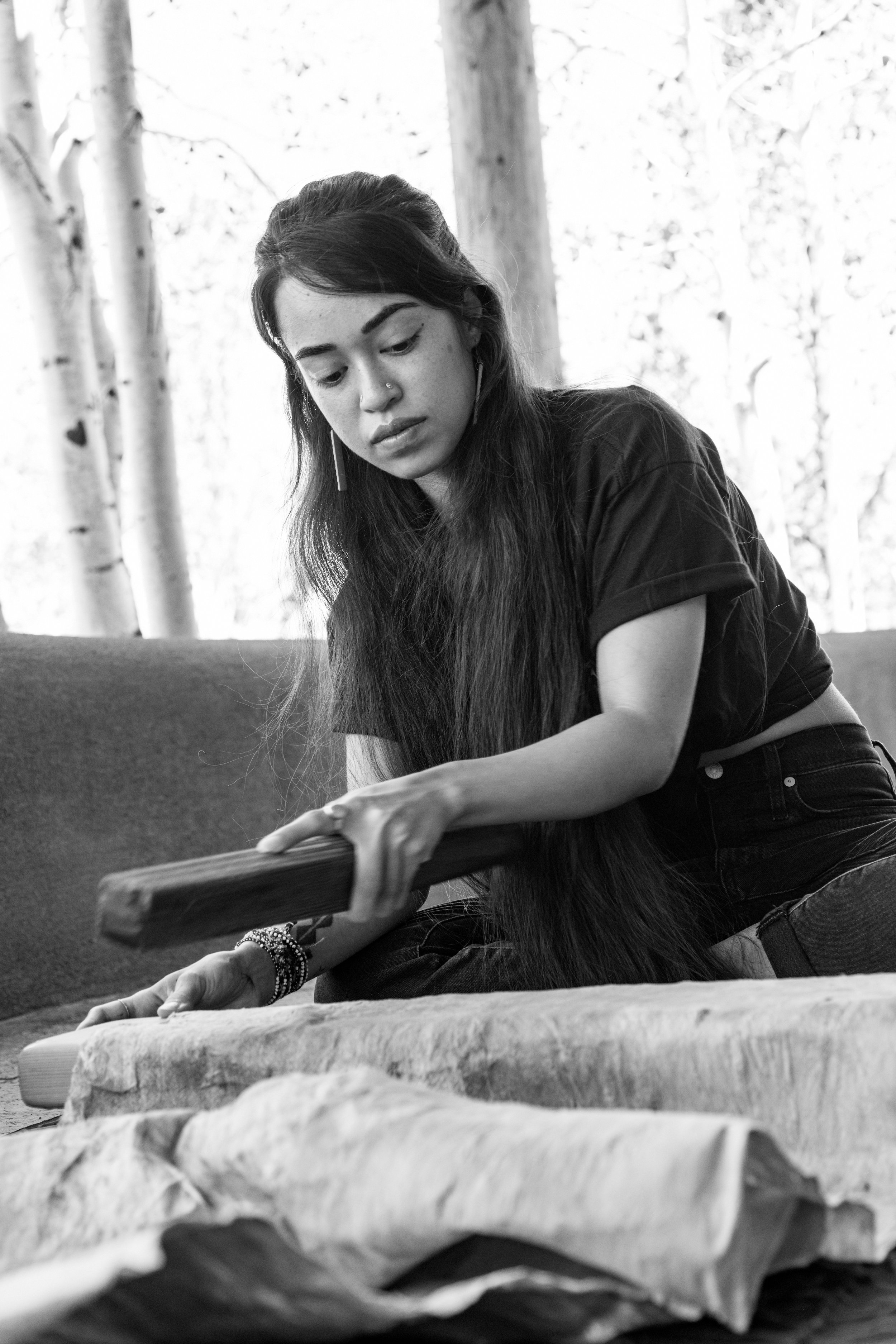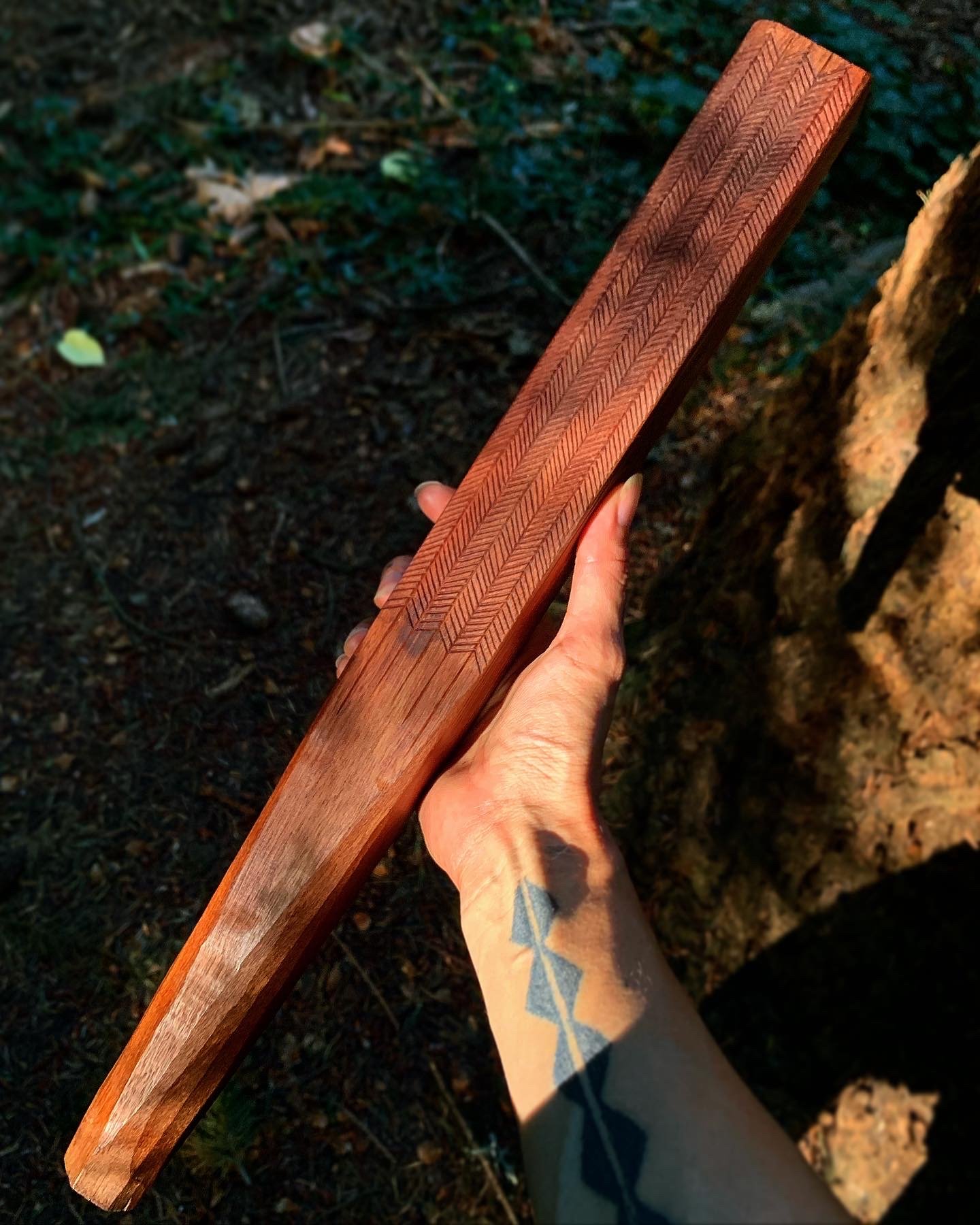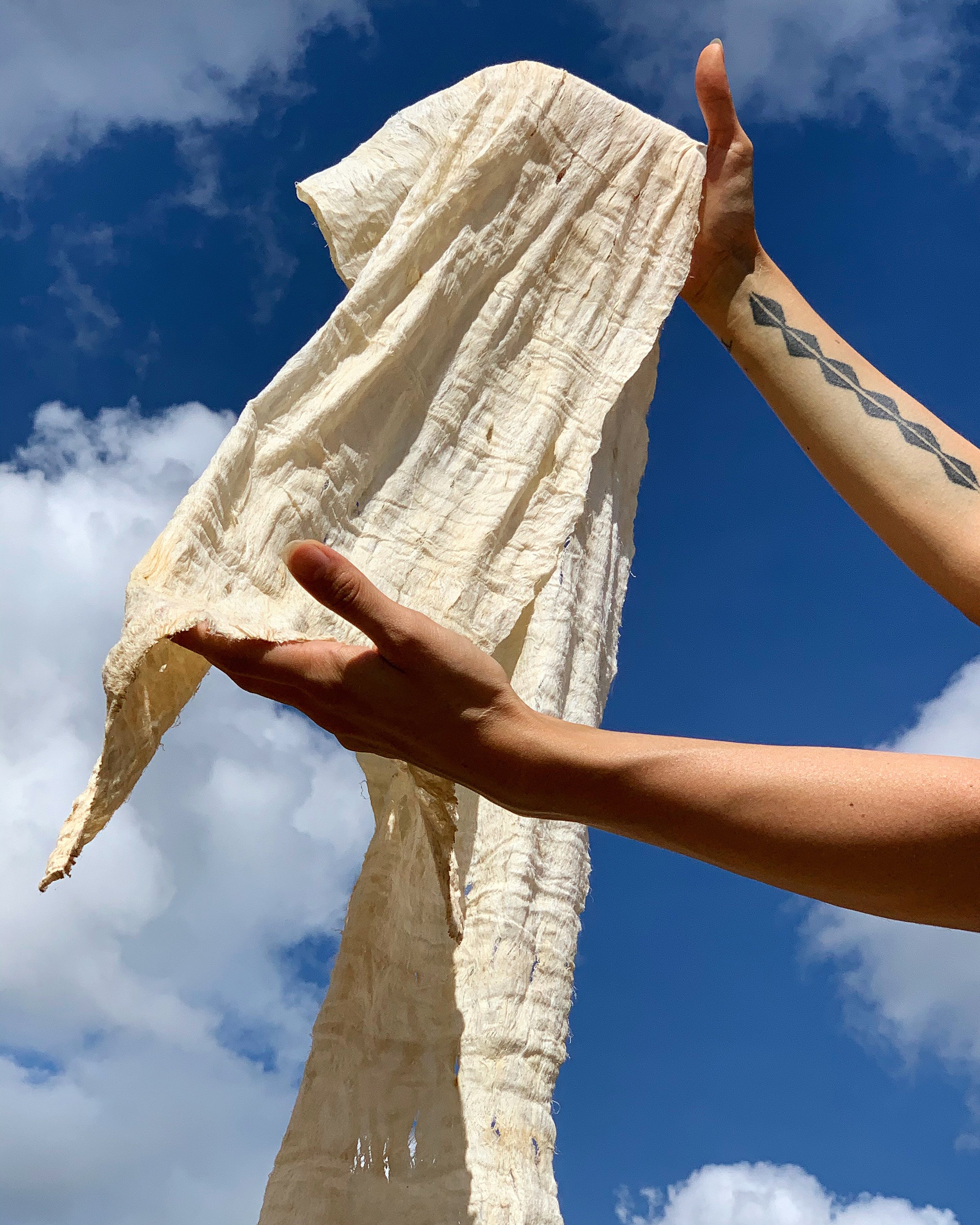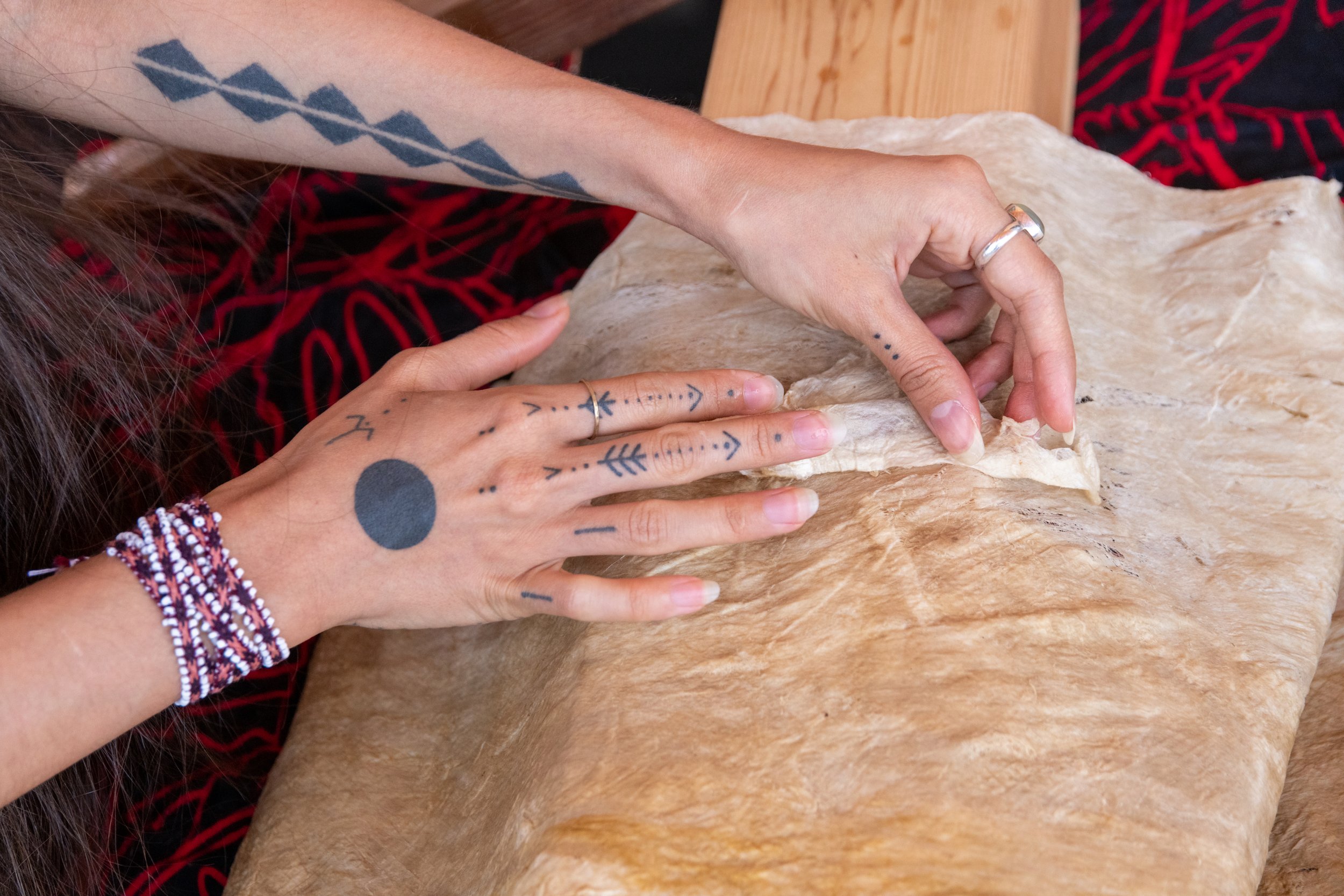ABOUT KAPA | TRADITIONAL HAWAIIAN BARKCLOTH
Background + History
Kapa is the traditional Native Hawaiian barkcloth made from the bark of specific trees, most commonly the paper mulberry, or wauke. This non-woven textile was traditionally made for clothing, bedding, ceremony, and burial wrappings, and is still used today.
Considered vital to everyday life, the wauke plant was brought via canoe by the first people to migrate from Taiwan into the south Pacific Ocean. These people, known as Austronesians, established cultures on numerous islands in the Pacific, across what is now Micronesia, Melanesia, and Polynesia. With them, they brought their languages, social structures, and cultural practices, including barkcloth. Variations of barkcloth production can be found throughout Pacific cultures, although Hawaiian kapa is considered to be of the most refined and intricately decorated.
Traditional ʻohe kāpala (carved bamboo printing tools) for imprinting patterns on finished kapa.
Sustainability + Perpetuation of the Art
This practice is very sustainable, using only natural pigments and plant dyes with a small environmental footprint. In addition, the cultivation and harvesting of the wauke trees is very sustainable, as the trees rapidly mature and thrive in Hawaiʻi. Their harvest is critical to maintaining the delicate ecosystem that Native Hawaiians have stewarded for thousands of years.
In the mid-1800s, the art and practice of kapa-making In Hawaiʻi was nearly lost due to the impacts of colonial assimilation. It is because of the dedication of a few practitioners during the Hawaiian Renaissance in the 1970s and 1980s that the community is experiencing a revival of kapa today.
Lehuauakea is a member of the next generation of young kapa-makers and students who have dedicated their lives to the reawakening and perpetuation of this cultural practice. It is part of Lehua’s vision that kapa once again becomes a part of daily life for Native Hawaiians by preserving and building upon this tradition for the next seven generations and beyond.







Process of Creating Kapa
Processing the wauke bark, beating it into cloth, creating the required tools, and designing the final piece of kapa is a very labor intensive process. The trees are harvested and the bark is stripped off in a single piece, which then goes through a process of soaking and several beatings to spread the fibers apart. Hawaiian kapa is also distinct in that a patterned watermark is pressed into the fibers during the final beating, creating a delicate imprint visible when held to the light. Each Pacific culture with this practice has a slightly different way of producing barkcloth, but each results in a relatively thin yet strong, multipurpose textile.
The methods of designing and decorating a finished cloth are also specific to the maker and their culture. Hawaiian kapa is known for its range of natural plant dyes and earth pigments used to imprint patterns that tell stories within each piece.
Lehuauakea holding one of their iʻe kuku (kapa beater tools). Image courtesy of Mario Gallucci.


